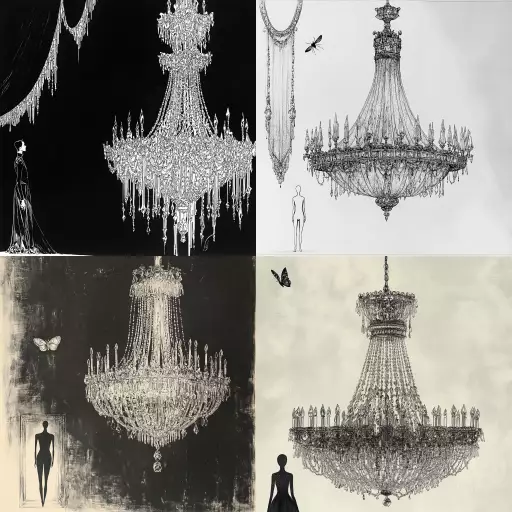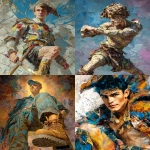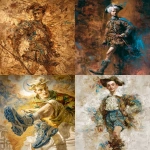Explore the Best AI Image Gallery

Pixelated Dreamscapes: Exploring the Impact of AI Images on Design
The creative landscape is undergoing a seismic shift, driven by the emergence of artificial intelligence (AI) image generation. This groundbreaking technology, capable of producing stunningly realistic and imaginative visuals from textual prompts, is poised to revolutionize the design industry in profound ways. From streamlining workflows to unlocking novel artistic expressions, AI images are reshaping how we conceive, create, and interact with visual content.
The Design Revolution: Unleashing Creative Potential
AI image generators empower designers with unprecedented control over their creative process. By inputting descriptive text prompts, designers can conjure up a vast array of visuals, from intricate illustrations to captivating photorealistic scenes. This eliminates the need for time-consuming manual sketching and allows designers to rapidly iterate through different concepts, exploring a wider spectrum of possibilities.
Moreover, AI algorithms can analyze existing design trends and styles, enabling them to generate images that align with specific aesthetic preferences. This opens up exciting avenues for personalized design solutions, catering to individual client needs and creating truly unique visual experiences.
Applications Across Industries
The impact of AI image generation extends far beyond traditional design fields. Its applications span a multitude of industries:
- Marketing and Advertising: Generating eye-catching visuals for social media campaigns, website banners, and product advertisements.
- Entertainment: Creating concept art for films, video games, and animation projects, bringing imaginative worlds to life.
- Education: Producing engaging visual aids for textbooks, online courses, and interactive learning experiences.
- Architecture and Interior Design: Visualizing building designs and interior spaces, allowing clients to explore different layouts and aesthetics.
Navigating the Ethical Landscape
While AI image generation presents immense opportunities, it also raises ethical considerations that require careful navigation:
- Copyright and Ownership: Determining the ownership rights to AI-generated images, as the creative process involves both human input and machine learning algorithms.
- Bias and Representation: Ensuring that AI models are trained on diverse datasets to avoid perpetuating biases and stereotypes in generated visuals.
- Job Displacement: Addressing concerns about potential job losses for designers and artists as AI tools become more sophisticated.
Future Trends: The Evolving Canvas
The field of AI image generation is rapidly evolving, with ongoing research pushing the boundaries of whats possible. Future trends include:
- More Realistic and Immersive Images: Advancements in AI algorithms will continue to produce visuals that are increasingly indistinguishable from real-world photographs.
- Personalized Content Creation: AI tools will enable individuals to generate custom images tailored to their specific needs and preferences.
- Interactive and Dynamic Visuals: Images will become more interactive, responding to user input and evolving in real time.
As AI image generation matures, it will undoubtedly reshape the creative industry, empowering designers with new tools and inspiring unprecedented levels of artistic innovation. By embracing this transformative technology responsibly and ethically, we can unlock its full potential to enhance our visual experiences and drive creative progress.
](https://images.ai-img.art/thumbnails/150/8c3bd422d50d35735d8fb33bd314a79e30e5b150129d5d09bdad822a2007593f.webp)

](https://images.ai-img.art/thumbnails/150/3a60737a5b67fa252207ad1ae6db245a26284f53fb5846996bb34515b39ff269.webp)









](https://images.ai-img.art/thumbnails/150/1614d64dd7156c95db952258978be809eb3db8cea4453fec69c49cbdfe63fa94.webp)